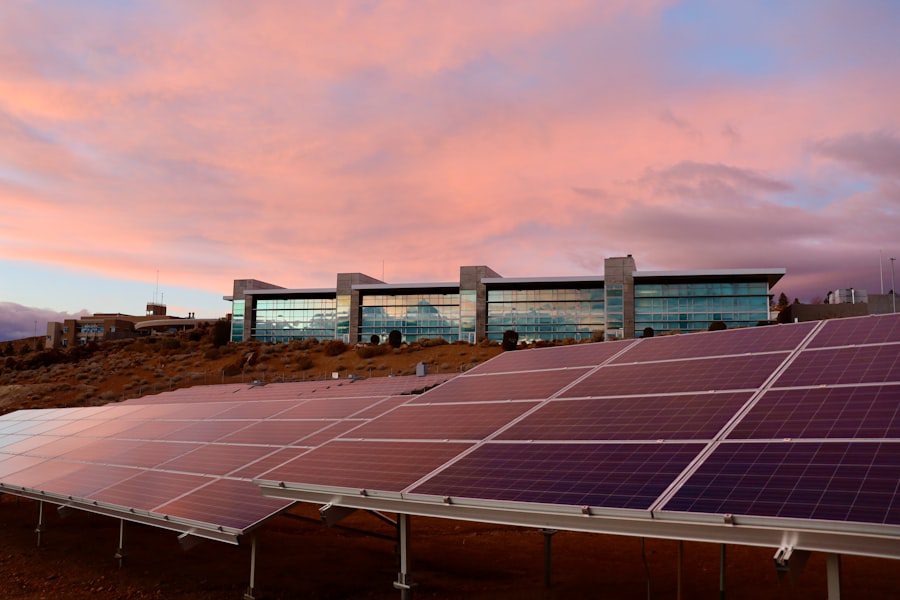Renewable energy has experienced significant growth in recent years as the global community seeks to reduce dependence on fossil fuels and address climate change concerns. The transition to renewable sources such as solar, wind, hydro, and geothermal power has been driven by increased environmental awareness, technological advancements, and decreasing costs. This shift has been further propelled by rising demand for clean and sustainable energy solutions from both consumers and businesses.
Consequently, renewable energy has become an increasingly significant component of the global energy mix, with numerous countries establishing ambitious targets for renewable energy implementation. The electricity sector has seen particularly notable growth in renewable energy adoption, especially in solar and wind power. These sources have become cost-competitive with traditional fossil fuels in many regions, making them attractive options for new power generation capacity.
This has led to increased investment in renewable energy projects and the development of innovative technologies and business models to support grid integration. As a result, renewable energy now constitutes a growing proportion of global electricity generation, with many countries achieving high levels of renewable energy penetration. This trend is expected to continue as renewable energy costs decrease further and new technologies facilitate greater integration into existing energy systems.

Key Takeaways
- Renewable energy is on the rise globally, with increasing adoption and investment in various forms such as solar, wind, and hydro power.
- The renewable energy market is experiencing significant growth and attracting substantial investment, driven by technological advancements and increasing demand for clean energy sources.
- Advancements in renewable energy technology, such as improved solar panel efficiency and energy storage solutions, are driving down costs and increasing the viability of renewable energy sources.
- Government policies and incentives, such as tax credits and renewable energy targets, are playing a crucial role in promoting the adoption of renewable energy and driving market growth.
- While the renewable energy market presents opportunities for economic growth and environmental sustainability, it also faces challenges such as intermittency and grid integration, which require innovative solutions for long-term success.
Advancements in Renewable Energy Technology

Advancements in renewable energy technology have played a crucial role in driving the growth of the renewable energy market. In recent years, there have been significant improvements in the efficiency and cost-effectiveness of renewable energy technologies, particularly solar and wind power. These advancements have been driven by ongoing research and development efforts, as well as economies of scale and manufacturing innovations.
As a result, solar panels and wind turbines are now more efficient and affordable than ever before, making them increasingly competitive with traditional energy sources. In addition to improvements in solar and wind power, there have been significant advancements in other renewable energy technologies, such as battery storage, hydroelectric power, and geothermal energy. These technologies have become increasingly important for integrating renewable energy into the grid and providing reliable and flexible power supply.
Battery storage, in particular, has seen rapid advancements in recent years, with the development of new battery chemistries and manufacturing processes that have driven down costs and improved performance. This has made it possible to store excess renewable energy for use during periods of high demand or low generation, helping to address one of the key challenges of renewable energy integration.
Government Policies and Incentives for Renewable Energy
| Country | Policy/Incentive | Description |
|---|---|---|
| United States | Investment Tax Credit (ITC) | A federal tax credit for solar energy systems |
| Germany | Feed-in Tariff (FIT) | A policy that requires utilities to buy renewable energy at a fixed price |
| China | Renewable Energy Subsidy | Financial support for renewable energy projects |
| India | Renewable Purchase Obligation (RPO) | Mandate for electricity providers to purchase a certain percentage of their power from renewable sources |
Government policies and incentives have played a crucial role in driving the growth of the renewable energy market. Many countries have implemented a range of policies to support renewable energy deployment, including feed-in tariffs, tax credits, renewable portfolio standards, and public procurement programs. These policies have helped to reduce the cost of renewable energy projects and create a more favorable investment environment for developers and investors.
In addition, many governments have set ambitious targets for renewable energy deployment, providing long-term certainty for the market and driving investment in new projects. In recent years, there has also been a growing focus on carbon pricing and emissions reduction targets, which has further incentivized the deployment of renewable energy. Many countries have implemented carbon pricing mechanisms, such as carbon taxes or cap-and-trade systems, to create a financial incentive for reducing greenhouse gas emissions.
This has helped to level the playing field between renewable energy and fossil fuels, making it more attractive for businesses and consumers to invest in clean energy solutions. In addition, international agreements such as the Paris Agreement have provided a framework for global cooperation on climate change mitigation, driving further support for renewable energy deployment.
Challenges and Opportunities in the Renewable Energy Market
While the renewable energy market has experienced significant growth in recent years, it still faces a number of challenges that need to be addressed in order to realize its full potential. One of the key challenges is the intermittency of renewable energy sources such as solar and wind power, which can create challenges for grid stability and reliability. This has led to a growing focus on energy storage technologies, as well as demand-side management and grid modernization efforts to support greater integration of renewable energy into the grid.
Another challenge for the renewable energy market is the need for continued innovation and cost reductions to remain competitive with traditional energy sources. While the cost of renewable energy has fallen significantly in recent years, there is still room for further improvement in areas such as manufacturing processes, materials science, and system design. This will require ongoing research and development efforts, as well as collaboration between industry, academia, and government to drive innovation in renewable energy technology.
Despite these challenges, there are also significant opportunities for further growth in the renewable energy market. The increasing electrification of transportation and heating, for example, is creating new opportunities for renewable energy deployment, as well as demand for new technologies such as electric vehicles and heat pumps. In addition, there is growing interest in distributed generation and microgrids, which can provide greater resilience and flexibility in the face of extreme weather events and other disruptions.
These trends are creating new opportunities for innovation and investment in the renewable energy market, driving further growth and diversification.
The Future of Renewable Energy
The future of renewable energy looks promising, with continued growth expected in the coming years as technology continues to improve and costs continue to fall. As the world seeks to transition to a more sustainable and low-carbon energy system, renewable energy is expected to play an increasingly important role in meeting global energy demand. This will require continued investment in research and development, as well as supportive government policies and incentives to drive further deployment of renewable energy technologies.
In addition to continued growth in solar and wind power, there are also significant opportunities for other renewable energy technologies such as battery storage, hydroelectric power, and geothermal energy. These technologies are expected to play an increasingly important role in providing reliable and flexible power supply, helping to address some of the key challenges of integrating renewable energy into the grid. In addition, there is growing interest in new business models such as community-owned renewable energy projects and virtual power plants, which can help to empower consumers and drive further decentralization of the energy system.
Overall, the future of renewable energy looks bright, with significant potential for further innovation and growth in the coming years. By continuing to invest in clean and sustainable energy solutions, we can help to create a more resilient and secure energy system while protecting the environment for future generations.
If you’re interested in sustainable living and renewable energy, you may also want to check out this article on eco-friendly briquette alternatives for sustainable living. Eco-Friendly Briquette Alternatives for Sustainable Living discusses how briquettes can be a sustainable and renewable energy source for households and industries. It’s a great read for anyone looking to reduce their carbon footprint and contribute to a greener future.
FAQs
What is renewable energy?
Renewable energy is energy that is collected from renewable resources, which are naturally replenished on a human timescale, such as sunlight, wind, rain, tides, waves, and geothermal heat.
What is the renewable energy market?
The renewable energy market refers to the buying and selling of renewable energy resources, including electricity generated from renewable sources such as solar, wind, hydro, and geothermal power.
What are the main types of renewable energy sources in the market?
The main types of renewable energy sources in the market include solar energy, wind energy, hydroelectric power, geothermal energy, and biomass energy.
What are the benefits of investing in the renewable energy market?
Investing in the renewable energy market can lead to reduced greenhouse gas emissions, energy independence, job creation, and economic growth. It also helps in mitigating climate change and reducing air and water pollution.
What are the challenges facing the renewable energy market?
Challenges facing the renewable energy market include high initial costs, intermittency of renewable energy sources, energy storage limitations, and the need for infrastructure upgrades. Additionally, policy and regulatory barriers can also hinder the growth of the renewable energy market.
How is the renewable energy market expected to grow in the future?
The renewable energy market is expected to grow significantly in the future due to increasing global demand for clean energy, advancements in technology, declining costs of renewable energy systems, and supportive government policies and incentives.



